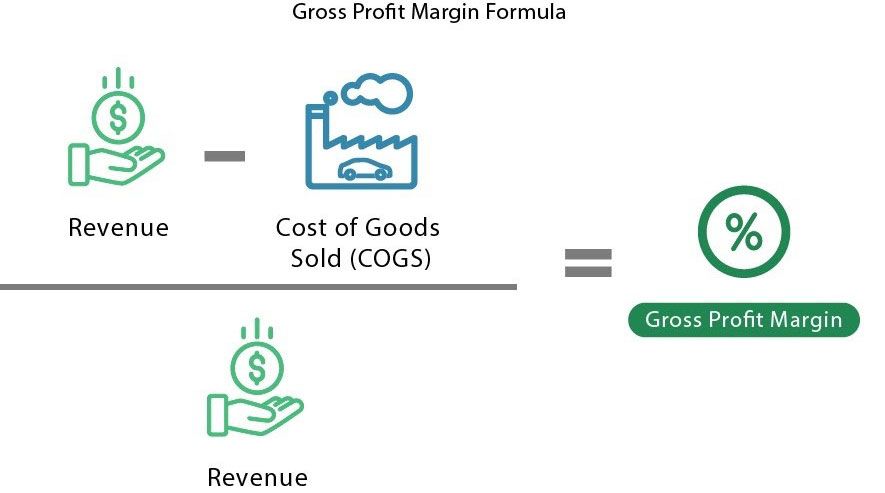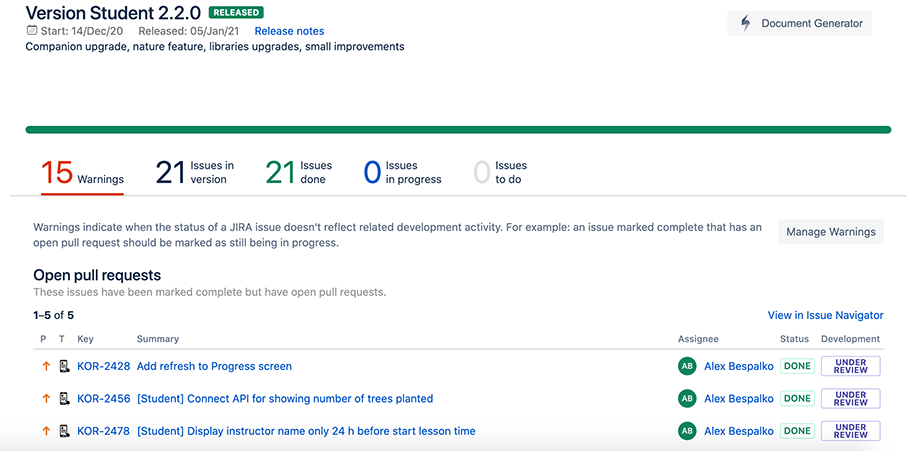As the Head of Delivery, one of my tasks is to monitor the progress of an ongoing project. Many times, critical thinking helped me to identify hidden problems, reduce risks, and avoid critical issues.
The health-check I am giving you next will help you:
- evaluate the project’s quality of service
- come up with possible improvements
- identify or prevent issues.
Step 1. Review the Legal Documentation
Start by checking the project’s legal documentation and whether it meets the standards.
The two questions to ask yourself first are:
- Have both parties signed a contract? Surprisingly, a lot of teams ignore such an obvious formality. That may lead to huge misunderstandings in the midst of the project;
- Is the contact still relevant? Make sure that the signed document is relevant with correct dates and available acts of Transfer and Acceptance.
The one to be responsible for legal documentation varies from one company to another. It can either be a project manager (like here at Fulcrum.Rocks), an account manager, or the Head of Delivery.
Step 2. Measure the Project’s Financial Health
When it comes to finances, three key metrics are used: GPM (Gross Profit Margin), receivables, and the actual budget utilization.
Gross Profit Margin, or GPM, is the ratio of direct costs (costs for specialists, server equipment, tools) to the total costs of the project.
The rule says GMP should be more than 50% of the total profit. If the figure turns out lower – be ready to face issues with the total margin.

To avoid further problems, calculate GPM before the start of the work and make sure it exceeds the 50% minimum. For the Fixed Price projects, the chance the risks work is always higher. To prevent the GPM decrease, set a higher margin.
Next comes the duration of the project’s receivables. Each company determines the own payment term: Fulcrum sticks to 5 days, while others may choose 3. If clients do not pay the receivables on time, there can be issues with the payment in the future.
How to play it safe? Before starting any project, negotiate a payment plan. Not only should you have a payment plan but also regularly monitor the one’s implementation. In case of any deviations, discuss the issue right away.
Another significant indicator is the compliance of the actual budget development with the planned one. For instance, a two-month project had a budget of $30,000 but turned out to spend a bit more. In this case, check if the used resources were overseen in the initial budget:
- If you had to encounter certain risks, determine which party was their “trigger” and would compensate it;
- If there has been a change in work scope, find out who initiated the changes. Also, find out whether those changes and extra payments were negotiated with the client.
At Fulcrum, we had a few cases when a change in a work scope made us increase the initial budget. One of them is the Sync.ai project.
By choosing the Fixed Price payment model, we negotiated on possible buffer changes in the plan. The PM brought in all changes to the project as buffers but no one kept track of how many hours they spent on each changed task.
Eventually, there were too many changes, and the project’s budget had to be increased. During the historical retrospective, we found out the actual budget still exceeded the planned one.
Luckily, we indicated the problem before it got supercritical, so the client agreed to bear all costs for previous and future changes.
To prevent the unwanted case, you need to:
- determine who will cover extra budget costs in advance;
- discuss all possible changes in the project;
- consider how these changes affect the GPM.
Step 3. Check the Project Status
The first and the main step to review the status easily and effectively is to visit Jira (or any other task manager you use).
What can you find out through task managers?
Quality. You can assess the project quality by the number of bugs in the backlog or on the project board. We pay special attention to bugs marked as “severity blockers”, and of “critical & high priority”.
It’s tough to determine how many errors will be critical to your project. A lot of it depends on the stage when the error has occurred. When it comes to production, even one critical bug is a risk for the company as it may stop the clients’ work. However, during the stage of development, it’s permissible to encounter a certain number of critical errors (10-15% of all errors in the project).
In case numbers are critical, find out the reasons: is something wrong in planning or developers are lying down on the job?
Reports. Jira allows you to track the speed of the project (velocity report). Also, it helps you find out if a team has enough time to solve tasks during sprints and how well they can do it.
Releases. One of the convenient Jira features is release management. Fulcrum is actively utilizing this feature and recommends others to try it too. You will be able to view the release date, estimate the workload, and check the progress of each release.
Managing releases was helpful as we worked on developing the Kör app. Managing releases in Jira helped to streamline quite a large number of tasks and prioritize them properly. As a result, the team had more confidence in their job. Herewith, there have been significant improvements in the development process.

Roadmap status
You will be able to compare the declared roadmap at the beginning of the project with the current roadmap in Jira. If there is a difference, find out what caused the change. The most common reasons would be:
- triggered risks
- changes in scope and priorities
- changes in the team
- incorrect project planning, or estimation.
Step 4. Talk to Experts
Besides checking the documentation, I advise you to talk to someone who is directly involved in the project.
Talk to the Account Manager
As the last stage of your project’s health check, you should speak to an account manager. Account managers at Fulcrum collect feedback from clients every two weeks. They are 100% aware of what’s going on in a project and can report on any of your requests.
Talk to the Client
If there is no account manager on the project, you may speak directly to a client. Ask both general or clarifying questions to get the most effective feedback. Identify what information is of your interest, whether it’s quality, communication, or timings. Then, formulate questions in a way to help you evaluate the chosen indicators.
Examples of questions:
- Can you define the current project status?
- Did you find bugs in the production?
- What was the most critical issue so far?
- Are you ready to recommend our company? (the main question for calculating the NPS score)
Talk to HR department
Even by prioritizing happy clients, we should not forget about the team. Speaking to an HR manager is highly recommended. Things to ask about:
- overall team’s feedback on the project;
- the amount of overtime (if any);
- Does someone work on weekends?;
- complaints from the team, if anyone wanted to leave, etc.
Talk to the Project manager
Obviously, you must talk to the Project Manager. Here is what both of you should discuss:
- Evaluate the project by the following indicators: schedule, quality, team, client communication;
- Current and most significant issues/challenges for a team;
- project & product risks;
- Extra questions that came up during your “health-check”.
By reaching multiple sources of information, you’ll get a better understanding of the project’s progress. This will help you develop a better plan for solving current issues (if any) with your PM, and reevaluate potential risks.

Fulcrum Experience
The best way for handling projects successfully is to not wait until problems occur but regularly make checks of the progress. This reduces a LOT of risks in the process.
Fulcrum introduced a system of weekly reports that shows you the project’s status. Each week, the project manager makes a report on the schedule, resources, quality, communication, and the scope of work. PM marks each indicator with one of three colors: green (optimal), yellow or red (critical). If any of the criteria is yellow or red, the project manager works through the task following the “result – analysis – action” scheme. Each point of the scheme turns into a separate task, which needs to be completed.
Also, we test cross-functional reporting. Both QA, business analyst, and account manager evaluate the status of the project. In case of discrepancies in their reports, we make a deeper analysis to define what exactly caused the conflict.
We display data from reports on interactive dashboards together with financial indicators. This allows you to identify problem areas at the earliest stage.
Every week we hold a half-hour meeting with each PM and discuss:
- major risks/challenges of the project;
- main opportunities;
- key monthly/weekly actions to help the project succeed.
Apparently, mistakes happen, and that’s okay. But sometimes they become too critical. At Fulcrum Rocks, such a “health check” helped us many times to prevent greater issues with our projects.
In one of our cases, a PM reported everything goes as planned, while there are only small technical blockers (which they successfully solve). But according to the report, the QA engineer had not received a build for three weeks and a client could not test the product. A few small technical issues quickly grew into an issue and the company’s CTO had to deal with it.
Thanks to interim reports, we could learn about the problem much earlier before it got too late.
